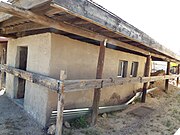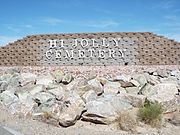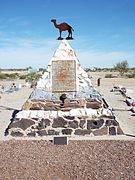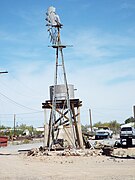
Quartzsite is a town in La Paz County, Arizona, United States. According to the 2020 census, the population was 2,413.

Salome is an unincorporated community and census-designated place (CDP) in La Paz County, Arizona, United States. The population was 1,530 at the 2010 census. It was established in 1904 by Dick Wick Hall, Ernest Hall and Charles Pratt, and was named after Pratt's wife, Grace Salome Pratt.

Edward Fitzgerald "Ned" Beale was a national figure in the 19th-century United States. He was a naval officer, military general, explorer, frontiersman, Indian affairs superintendent, California rancher, diplomat, and friend of Kit Carson, Buffalo Bill Cody and Ulysses S. Grant. He fought in the United States-Mexican War, emerging as a hero of the Battle of San Pasqual in 1846. He achieved national fame in 1848 in carrying to the east the first gold samples from California, contributing to the gold rush.

Hi Jolly or Hadji Ali, also known as Philip Tedro, was an Ottoman subject of Syrian and Greek parentage, and in 1856 became one of the first camel drivers ever hired by the US Army to lead the camel driver experiment in the Southwest.

Yiorgos Caralambo also called Greek George and George Allen was an alleged murderer and camel driver hired by U.S. Army in 1856 for the Camel Corps experiment in the Southwest. The camels were to be tested for use in transportation across the "Great American Desert."
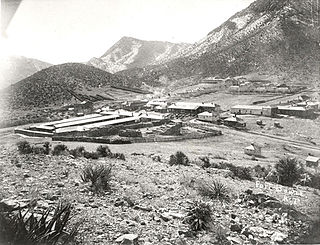
Fort Bowie was a 19th-century outpost of the United States Army located in southeastern Arizona near the present day town of Willcox, Arizona. The remaining buildings and site are now protected as Fort Bowie National Historic Site.
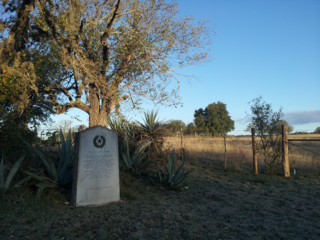
Camp Verde was a United States Army facility established on July 8, 1856 in Kerr County, Texas along the road from San Antonio to El Paso.
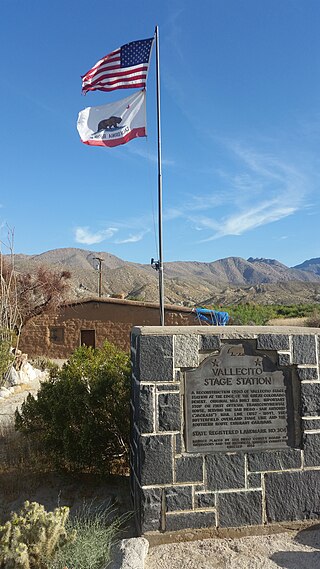
Vallecito, in San Diego County, California, is an oasis of cienegas and salt grass along Vallecito Creek and a former Kumeyaay settlement on the edge of the Colorado Desert in the Vallecito Valley. Its Spanish name is translated as "little valley". Vallecito was located at the apex of the gap in the Carrizo Badlands created by Carrizo Creek and its wash in its lower reach, to which Vallecito Creek is a tributary. The springs of Vallecito, like many in the vicinity, are a product of the faults that run along the base of the Peninsular Ranges to the west.

Fort Apache Historic Park is a tribal historic park of the White Mountain Apache, located at the former site of Fort Apache on the Fort Apache Indian Reservation. The park interprets the rich and troubled history of relations between the Apache and other Native American tribes at the fort, which was converted into a Bureau of Indian Affairs boarding school after its military use ended. The park, which covers 288 acres (117 ha) of the former fort and school, as well as a nearby military cemetery, form the National Historic Landmark Fort Apache and Theodore Roosevelt School historic district.

Fort Tyson was a privately owned fort built in 1856 by Charles Tyson in the area which is now called Quartzsite, Arizona. He built the fort to protect the local miners and water supply from the raids of the Yavapai (Mohave-Apache), a Native-American tribe. The area in which Fort Tyson was located has been known as Fort Tyson, Tyson’s Well and is now called the town of Quartzsite because of the large amount of quartz found in its surrounding areas.

The Hi Jolly Monument is a grave site in the Hi Jolly Cemetery located at Quartzsite, Arizona, United States, marking the grave of Hi Jolly, a Syrian-born camel driver brought to the United States in 1856 to drive camels for the US Cavalry. The site is located halfway between Phoenix, Arizona, and Los Angeles, California. It was added to the National Register of Historic Places in 2011.













